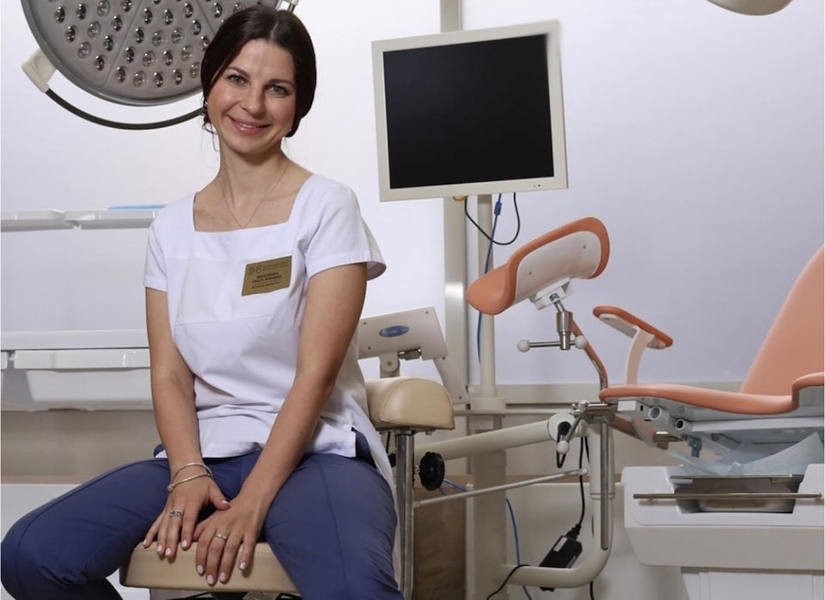Pelvic organ prolapse: ask your doctor
health , PFM , gynecologist , urologist , Olga Malinina
What do pelvic floor muscle (PFM) training serve for? What about young nulliparous women, do they need these trainings?
Olga: Pelvic muscle training are something any woman needs, regardless of her age or race. First, strong muscles and one’s ability to control them improves one’s sexual life. Second, muscle tone plays an important role during fertile period for having easier childbirth and rapid after-delivery rehabilitation. Third, the whole list of inflammatory diseases, to a significant extent, are caused by blood congestion in the pelvis.
How effective, in your opinion, are pelvic muscle trainings to avoid or get rid of pelvic organ prolapse related to ageing?
As a doctor, I have seen women who have been training their pelvis all their life. As a rule, they have never had problems caused by prolapse or urinary incontinence. These problems emerge later on, if ever, and the symptoms are mild. These cases require no surgery. In contrast, younger girls may suffer from significant disorders that can only be solved through surgery. That is why I believe that trainings are indispensable. Still we cannot know how effective they prove for a specific patient, we cannot be sure. It depends on a girl.
Can you please list cases that require a surgery or other medical methods of strengthening pelvic floor muscle in women?
A surgery is a last resort, as a rule. There are multiple types of less invasive treatment techniques: laser light, hyaluronic acid, BFB (biofeedback-editor’s note), etc.
One should pay attention if there is a pelvic prolapse involving functional disorder: stress-related urinary incontinence, recurring bacterial vaginosis, heaviness in the perineum, difficulties at the moment of defecation.
Can you mention any methods for treating urinary incontinence?
The first and the primary one implies training PFMs using a perineometer (a medical device for pelvic muscle strengthening, analogous to Kegel exercise machine-editor’s note). This method is essential and it is always used as an addition to other methods. One of the professional training techniques is called BFB therapy. They are conducted in hospital and one needs medical supervision.
Treatment with CO2 laser is a mini-invasive photothermal therapy when vaginal mucosa is exposed to laser light. Due to stimulation of collagen and elastin production by the mucosa, tissues become more resilient and urinary incontinence symptoms become milder. Another mini-invasive method includes paraurethral introduction of polymer -based bulking gels or hyaluronic acid.
As for surgery (TVT-O), this is the last resort, considered when other methods have proved either ineffective or inadvisable.
In case a surgery is indispensable, can you explain what is TVT-O?
This surgery is rather simple, however it must be conducted by an expert in this field. A synthetic implant (tape) is placed under the medium part of the urethra to support and fix the urethra in its normal position.
What about contraindications?
Birth spacing, pregnancy, serious somatic pathologies, infections of urogenital system, problems related to blood clotting.
How is this surgery done? What type of anesthesia is commonly used? How long does this surgery take? How painful is it?
It depends on a specialist, it is hard to fix time frames, we are all different. The surgery may be done under general or spinal anesthesia. In both cases a patient feels absolutely nothing. However, in some clinics such surgery is done under local anesthesia.
I heard that after the surgery one should not sit for two weeks. In my case it means I won’t be able to drive. I use my car every day, for my own necessities and those of my older parents. Besides, it means having difficulties at work (I will have to figure out a way to work standing up. Are there any therapies not involving these limitations?
Of course, there are. The whole list of minimally invasive procedures are not coupled with such limitations.
Can you mention any possible after-surgery complications. Can a surgery be a failure? What are the risks a woman undergoes after giving her consent to similar treatment?
Risks and failures are part of everyone’s life. No therapy is risk-free, complications may occur.
Although uncommon, potential complications are the following: low effectiveness of surgery due to incorrect sling position (implant-editor’s note); pain, bleeding, increased bladder hyperactivity, urinary retention. The vast majority of these problems can be solved within the period from several hours to 30 days.
What do your patients say? Do they feel relieved?
Yes, they feel much better. As for urinary incontinence, it is shortly left behind.
After the surgery, the problem of urinary incontinence is solved. And what about peeing calls? Do they become milder?
No, after surgery, as a rule, the peeing calls do not get milder (due to hyperactive bladder), they can even get more severe. The point is that we often deal with mixed forms of incontinence while surgery is only effective to treat stress-related incontinence.
Do men face similar problems? If they do, what are the ways of addressing these problems?
They do, for sure. As a rule, after prostate surgery, doctors recommend starting muscle trainings. If ineffective, a urethral sling should be introduced.
Let’s talk a bit about the core point (considering the scope of our website). Which of the therapies involve withholding sex (especially vaginal intercourse)?
Every therapy involves abstinence from sex, except for the pelvic muscle training. However, the terms of abstinence differ. In case gel is introduced, we talk about 7 days. After laser correction-from 3 to five days. After a surgery, it may take a month or more before one can reassume their sexual activity.
The same for sex toys?
Yes, naturally. Any penetration is prohibited.
After the therapy is over (depending on the method), is anal sex possible?
Once the period of abstinence is over, no problem with anal sex.
What about some extreme practices, such as fisting or squirting methods, that involve active stimulation of the upper vaginal wall?
After a surgery, such stimulation is not recommended. During the surgery a so called sling, a sort of loop, is introduced to support the vaginal vault. If strongly stimulated, one runs the risk of developing fistula and the mesh may prolapse (sag-editor’s note) through vaginal wall.
After laser correction and gel therapy these sexual practices are ok.
Can any sexual practices reduce the effect of the therapy?
No, they cannot, I guess. The only exception is surgical treatment after which hard vaginal stimulation is contraindicated.
Thank you for sharing useful information!
Malinina Y. Olga. Chief doctor of “Doctor PROF” medical center. Urologist, gynecologist. PhD in Medicine.
Education: Degree in “General Medicine”, State Medical Academy of Nizhny Novgorod (2005), clinical residency in “Urology”, State Medical Academy of Nizhny Novgorod (2007), degree in “Andrology”, Moscow State University of Medicine and Dentistry (2007), post-graduate studies in State Medical Academy of Nizhny Novgorod (2011).
Supplementary education: “Endourology”, State Medical Academy of Nizhny Novgorod (2008), “Thermal water treatment for urological patients”, Fiuggi, Italy (2009), Ultrasound diagnostics in urology, Russian Roszdrav State Academy of post-graduate education (2010), “Endocrinological aspects of andrological diseases”, Peoples’ Friendship University of Russia (2010), “Chronic pelvic pain”, France (2012).
Professional experience: 15 years
Specialized in treatment of the following diseases, conditions and areas: pyelonephritis; cystitis, prostatitis; urinary incontinence; chronic pelvic pain; esthetic urinary gynecology; transposition of urethra in female and male patients using mini-invasive methods; male infertility, erectile dysfunction.




Comments (0)
Чтобы оставлять комментарии, необходимо авторизироваться.